CHAPTER XIV - The Mesa
There are regions of the park that are not as easily accessible as the
field trip route but which contain unusual habitats and some species of
plants rarely encountered in this area. They can only be reached by
"bushwhacking," which results in close encounters with biting and
stinging insects, thorny plants, and lots of mud. It is very easy to
get lost in the unmarked areas of Lick Creek Park and we recommend that
visitors not stray from the developed paths. Instead, let us show you
some of the more interesting places.
One unusual location in the park is the Mesa, a small rocky hill. It
is difficult to reach traveling cross country, which is probably good
because it is a rather fragile habitat.
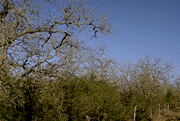
The Mesa isn't very tall or very steep, but its thin, rocky soil is
unique to the park this area in general and supports some interesting
plants.
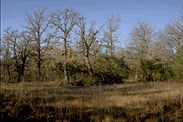
After a bit of searching, we found the Coryphantha missouriensis
we'd been seeking. Other than Opuntia (Prickly Pear), this is
the only cactus genus locally. The plants are round and squat. The pale
greenish-yellow flowers are nearly as big as the plants themselves.
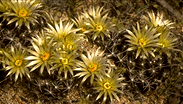
The fruits are small and red. They give the squatty little plants
the appearance of earth-
bound Christmas wreaths.
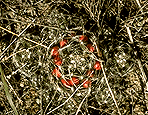
We also found Zigadenus nuttallii an attractive but toxic
plant, as hinted by its common name of Death Camas. This is the only
population we know of that exists in Lick Creek Park, although it is
somewhat common in this area.
 ...................
...................
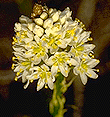
Chapter 15 - Rocky Creek
Lick Creek Park Field Trip Home Page